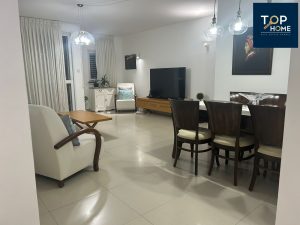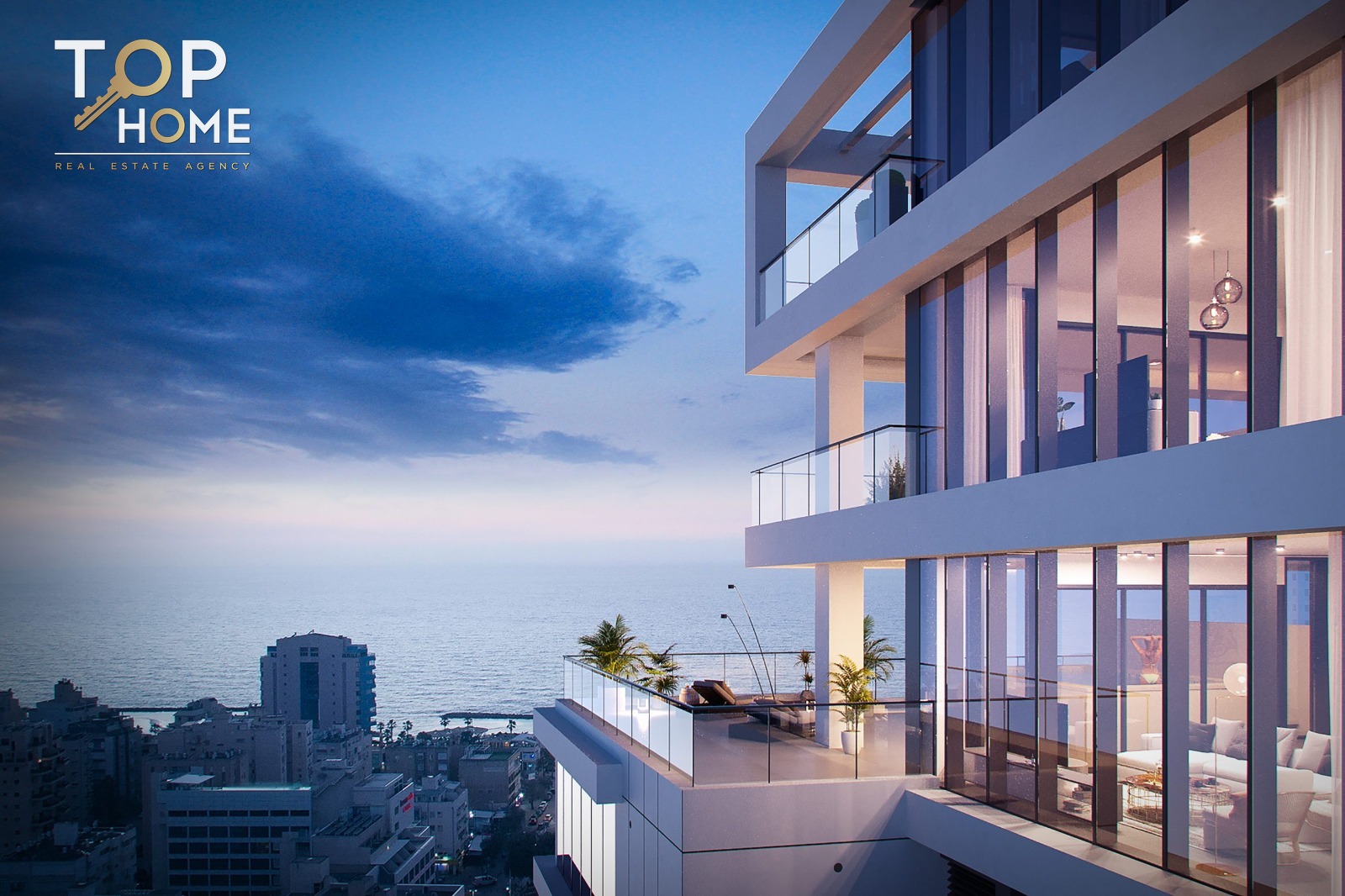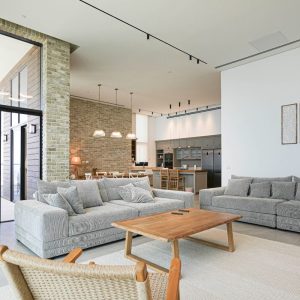
Why Netanya Is Perfect for People Who Want Peace Without Sacrificing Pace
Why Netanya Is Perfect for People Who Want Peace Without Sacrificing Pace Over the past decade, more and more people have realized that the way

Choosing the furnishing level in a rental apartment may sound like a technical detail, but in practice it’s a strategic decision that shapes your living experience and your budget for the coming months. A furnished place offers a “soft landing”: you walk in with a suitcase, turn on the AC, and that same evening you’ve got somewhere to sit and something to cook with. An unfurnished place offers full control—your personal style, equipment quality according to your taste and means, and the chance to build a home that feels “yours.” Where’s the line? In rental duration, money, and hassle. Anyone moving frequently between cities or on a temporary assignment will likely prefer to shorten processes and reduce risk; families planning a multi-year routine will usually prefer to invest once and enjoy for the long term. Alongside personal considerations, there are also market factors: availability, competition, and seasonal timing.
Looking at properties for rent in Netanya, you’ll find a diverse supply—seafront units with a convenience premium, urban apartments close to transit, and “roommate-friendly” places in sought-after neighborhoods. That’s why it’s important to factor in the true cost: rent, furniture and moving, time, repairs, and guarantees. A good agent—or your own experience—can shorten the learning curve, but even without that, simple tools like a comparison table, a structured move-in protocol, and a defects checklist will bring order. Within the Netanya brokerage scene you’ll find flexible landlords willing to remove part of the furniture, others happy to add appliances, and some who will price accordingly for upgrades. The key is transparency: spell out in writing what stays, what’s being replaced, who handles things when something breaks, and what happens at lease end. That way, the choice between furnished and unfurnished shifts from gut feeling to a balanced business decision that weighs cost, convenience, and flexibility.
Comparing asking prices “on paper” is tempting—but not enough. To truly understand what’s cheap or expensive, calculate a realistic monthly cost that includes four components:
Rent
The cost of furniture and main appliances spread over the number of months in the lease
Ongoing maintenance and wear-and-tear
Time and hassle—hidden money
Imagine two scenarios: a furnished apartment that’s NIS 500–600 more per month versus an unfurnished one that requires buying a good bed, a decent closet, a fridge, a washing machine, a table and chairs, a sofa, and lighting—easily NIS 10,000–15,000. If the lease is for two years, spreading that purchase equals roughly NIS 420–625 per month—very close to the furnished premium. But it isn’t all numbers: with a furnished place you save weeks of searching, measuring, and moving; with an unfurnished one you enjoy quality by choice and longer manufacturer warranties. Don’t forget the “small” big things: curtains, bulbs, rugs, shelves, and storage—another NIS 1,500–3,000.
And what about turnover? If you plan to move again in a year, furniture you buy now may sell at a loss. If you expect to stay three years or more, the investment spreads comfortably. Bottom line, also consider appliance life cycles and manage risk: extended warranties, basic contents insurance, and a preference for reliable brands. A careful scan of apartments for rent in Netanya will reveal wide gaps between neighborhoods and building types; always compare apples to apples: size, condition, floor, parking and elevator—and only then furnishing level. That’s how you see who’s truly cheaper and who just “looks cheap.”
Here’s where the real gap between furnished and unfurnished often closes. In a furnished rental, responsibility for appliances and basic furniture rests on the lease and the landlord’s good faith: who calls the technician? Within how long? Who pays if something fails due to reasonable wear and tear? It’s best to anchor response times, preferred vendors, and a clear cost split (for example: up to NIS 300 the tenant covers; above that, the owner). Define what counts as “reasonable wear and tear” or depreciation versus damage, and insist on a structured protocol with photos and a short video at move-in and move-out.
In an unfurnished apartment, the picture flips: you own the appliances—but you’re also the “maintenance department.” The advantage: control over quality, manufacturer warranties, and sometimes upgrades. The disadvantage: coordinating technicians and losing time. There’s also a gray area: “middling” furniture in a furnished place can trigger disputes on move-out day (scuffs on the sofa, wobbly table legs). The remedy: a signed inventory list with item numbering, noting condition (new/used/worn), and for expensive items—a brief video record. Don’t forget insurance: a landlord’s building policy doesn’t cover your personal contents; consider basic contents insurance, especially if you brought valuable gear. In any case—keep friendly, orderly communication: documented messages, call summaries, and a shared task list (a simple shared file works wonders). That turns responsibility from a mystery into a clear contractual matter that prevents friction.
Between black and white lies a smart gray: the partially furnished apartment. This model is common in new buildings or in units intended for tenants who want a quick landing but also design freedom. Typically you get essential appliances (fridge, oven/stove, washing machine) and basic furniture: at least one bed and a closet. The double benefit: you save the heavy purchases and the “moving day” logistics, and then gradually add comfort pieces tailored to your taste and budget. Be sure to have a written list of every item that remains in the apartment, verified to be in working order, and a commitment to fix issues before move-in.
It’s not only possible but wise to negotiate in “comfort shekels”: instead of asking for a rent discount—ask for an extra AC unit in a bedroom, a new closet, or a mattress swap. That preserves monthly cash flow and gives immediate quality-of-life value. Moving out is easier too: fewer items to dismantle and move, fewer arguments over the condition of old furniture. Beyond that, a partially furnished place helps tenants arriving in a new city without a car or logistical resources—the first days begin with “X ready items,” and the rest upgrades on your timeline. Scanning listings, you’ll see that in the Netanya rentals category this middle-ground solution is relatively common—landlords understand the value, and the premium is usually modest. Advanced tip: define in the lease a pre-agreed “upgrade bundle” that triggers if the agreement extends into a second year—like replacing the oven, improving lighting, or adding a built-in closet. That creates a progress path that rewards both sides.
The answer depends on duration, lifestyle, and life stage. Furnished suits shorter rental periods, students, relocations, temporary projects, couples just starting out, and anyone seeking a “soft landing” amid uncertainty. Move-in is fast, there’s no sprint between stores, and your monthly outlay is predictable. The downsides: limited design flexibility, equipment standards that may not match yours, and your obligation to keep items in good condition. An unfurnished apartment fits families seeking stability, those who already own quality equipment, tenants with special needs, or design lovers wanting full control. The upfront cost is higher, but it spreads over time and yields daily satisfaction.
Another consideration: if you work from home, you’ll invest more thought in ergonomics and quality—so an unfurnished place may “pay off” in comfort and health. Temporary pressure matters too: if you must move in within two weeks—furnished wins; if you can wait a month or two and build a home patiently—unfurnished is more worthwhile. Finally, don’t skip focused advice if needed: working with a Netanya real estate office, some agents know the inventory and tenants’ move-out timelines and can steer you to units that precisely match your lifestyle—including landlords flexible on furnishing level. Do a quick exercise: write down three “must-have” items and three “nice-to-haves,” set a realistic time horizon, and decide where you stand on the spectrum between immediate convenience and full control.
A good decision starts with the horizon: how long you’ll stay, how important fast move-in is, and how much design control you want. Next comes budget—not just monthly rent, but also the guarantees you’ll be asked to provide and the upfront capital. Build three scenarios, list all components (rent, furniture/moving, maintenance, time), and set your boundaries: what’s non-negotiable, what’s flexible, and what won’t fly at any price. In a focused search of apartments for rent in Netanya, make your own comparison table and compare apples to apples: size, condition, floor, parking, elevator—and only then furnishing level. If you’re torn, schedule two tours the same day—one furnished and one unfurnished—and do a quick calculation on the spot. Take photos, document everything, and ask for a draft lease in advance to understand responsibility and exit terms. Don’t hesitate to ask for “an upgrade instead of a discount”—it’s often the smarter move for both sides. In the end, a good home is a combination of the right numbers and the right feeling. Put both on the table and it’s easy to choose with confidence. Netanya rentals offer almost any mix you could want—the task is to know what truly fits you now, while keeping flexibility for the future. Do that, and the choice between furnished and unfurnished stops being a “headache” and becomes a conscious decision that grants peace of mind, comfort, and budget discipline.
Q: How do you make a fair comparison between a furnished and an unfurnished apartment?
A: Calculate the “true monthly cost”: rent + furniture/moving (spread over the lease term) + maintenance/wear-and-tear + time/hassle. Only then compare the two apartments “apples to apples.”
Q: If I’m planning to stay just one year—what’s better?
A: Usually a furnished place saves time and upfront capital, so it’s better for a one-year lease. If you find high-quality second-hand furniture at a good price, unfurnished can work too—but it takes more organizing.
Q: Who is responsible for fixing the fridge/AC in a furnished apartment?
A: Depends on the lease. Typically, if failure is due to reasonable wear and tear or depreciation, the landlord must repair. If it’s caused by improper use, the tenant pays. It’s crucial to clarify in the contract: who calls the technician, within how long, and whether there’s a deductible. Ask for a signed inventory with item condition at move-in.
Q: Can we go with “partially furnished”?
A: Yes. Many landlords agree to leave essential appliances and basic furniture while giving you freedom for the rest. Put in writing what stays and what will be replaced before move-in.
Q: How do you negotiate when there’s no rent discount?
A: Ask for “an upgrade instead of a discount”: an extra AC unit, a new mattress, a new closet, repainting, or specific repairs. That’s real value and improves quality of life. Negotiation also depends on local supply (and how important it is not to lose this specific apartment).
Q: What should I check on the tour to avoid surprises?
A: Electricity/plumbing (faucets, leaks), damp and mold spots on walls, unpleasant odors in the unit, window sealing, appliance condition, noise and surroundings, municipal tax and building fees. Document the current condition with photos and video to avoid disputes at move-out.
Q: I have partial furniture—what’s better?
A: Consider a “partially furnished” place or an unfurnished one with staggered purchases. That way you don’t pay a premium for items you already own and you don’t have to buy everything at once.
Q: What about insurance?
A: The landlord’s building policy doesn’t cover your contents or third-party liability. Consider basic contents insurance, especially if you brought expensive equipment/computers.
Q: Pets—does that make choosing an apartment harder?
A: It can, but you can soften concerns: provide a reference letter from previous rentals, offer reasonable guarantees, and spell out cleaning/maintenance rules in the lease. Transparency up front prevents friction.
Q: How do I make a final decision between two good options?
A: Check which one best matches what you defined as important, run a quick calculation for three horizons (12/24/36 months), list non-financial pros/cons (time, convenience, design flexibility), and decide based on your most likely scenario. And don’t forget to consult a good agent who knows both properties.a

Why Netanya Is Perfect for People Who Want Peace Without Sacrificing Pace Over the past decade, more and more people have realized that the way

Quiet opportunities, less competition, and sellers eager to close the year strong The end of the year brings a special atmosphere: businesses finalize budgets, families

High Interest Rates Change the Rules of the Game, But Don’t Necessarily Lower Value The interest rate increases of the past two years have created

How security instability changes buyer and seller behavior—and property values—in a city that keeps moving forward War Creates a Temporary Pause, but Does Not Paralyze

Why Now Is the Right Time to Invest in an Upgrade Most landlords wake up to upgrades only when spring arrives—but those who understand how

A Fresh Start in the Cold Season Your first winter in a new home is like a true test of build quality, design strength, and